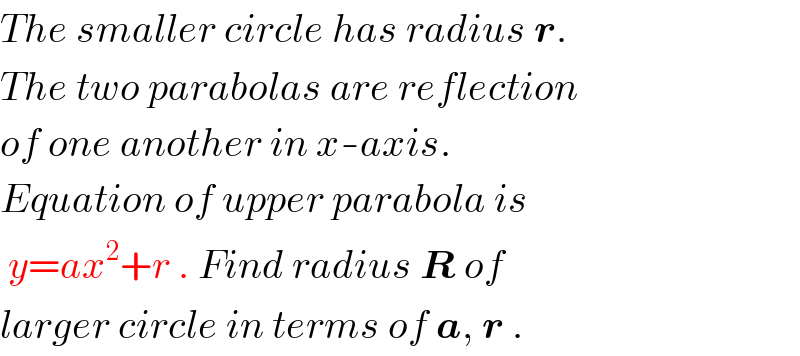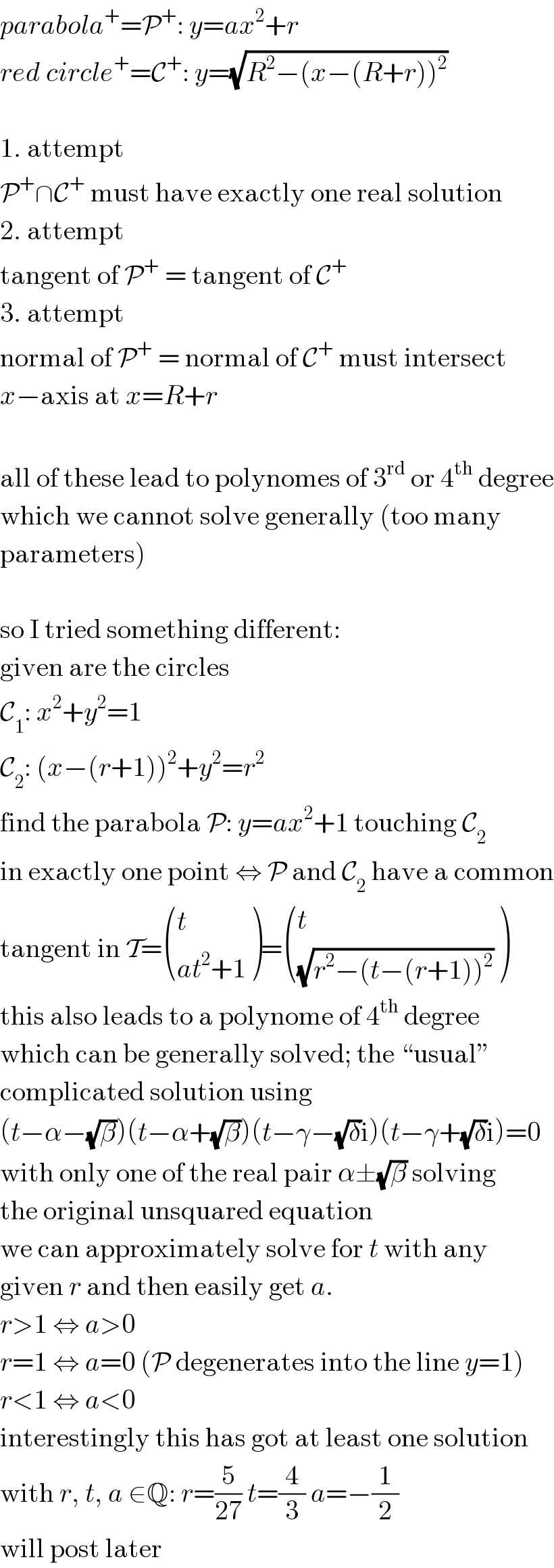
Question and Answers Forum
Question Number 42624 by ajfour last updated on 29/Aug/18

Commented by ajfour last updated on 29/Aug/18

Commented by MJS last updated on 02/Sep/18

Answered by ajfour last updated on 03/Sep/18
![eq. of parabola y = ax^2 +r P(x_1 , y_1 ) eq. of larger circle (R+r−x)^2 +y^2 = R^2 distance of P from centre of larger circle is R ⇒ R^2 =(R+r−x)^2 +(ax^2 +r)^2 2R((dR/dx))=2(R+r−x)((dR/dx)−1)+ 2(ax^2 +r)(2ax) As R is minimum, (dR/dx) must be zero: ⇒ R+r−x = 2ax(ax^2 +r) ⇒ x = f(R) ⇒ R^2 =[R+r−f(R)]^2 +{a[f(R)]^2 +r}^2 R is then obtained from above eq. ________________________](Q42651.png)
| ||
Question and Answers Forum | ||
Question Number 42624 by ajfour last updated on 29/Aug/18 | ||
 | ||
Commented by ajfour last updated on 29/Aug/18 | ||
 | ||
Commented by MJS last updated on 02/Sep/18 | ||
 | ||
Answered by ajfour last updated on 03/Sep/18 | ||
![eq. of parabola y = ax^2 +r P(x_1 , y_1 ) eq. of larger circle (R+r−x)^2 +y^2 = R^2 distance of P from centre of larger circle is R ⇒ R^2 =(R+r−x)^2 +(ax^2 +r)^2 2R((dR/dx))=2(R+r−x)((dR/dx)−1)+ 2(ax^2 +r)(2ax) As R is minimum, (dR/dx) must be zero: ⇒ R+r−x = 2ax(ax^2 +r) ⇒ x = f(R) ⇒ R^2 =[R+r−f(R)]^2 +{a[f(R)]^2 +r}^2 R is then obtained from above eq. ________________________](Q42651.png) | ||
| ||